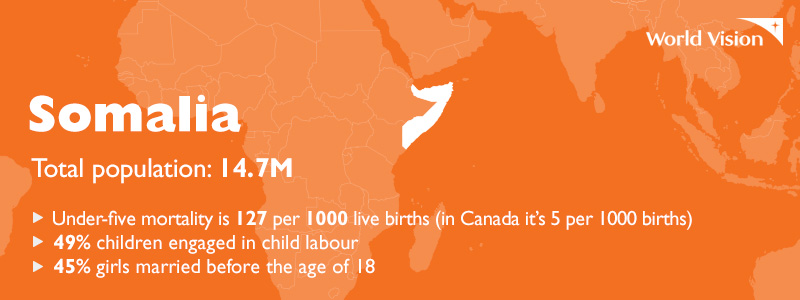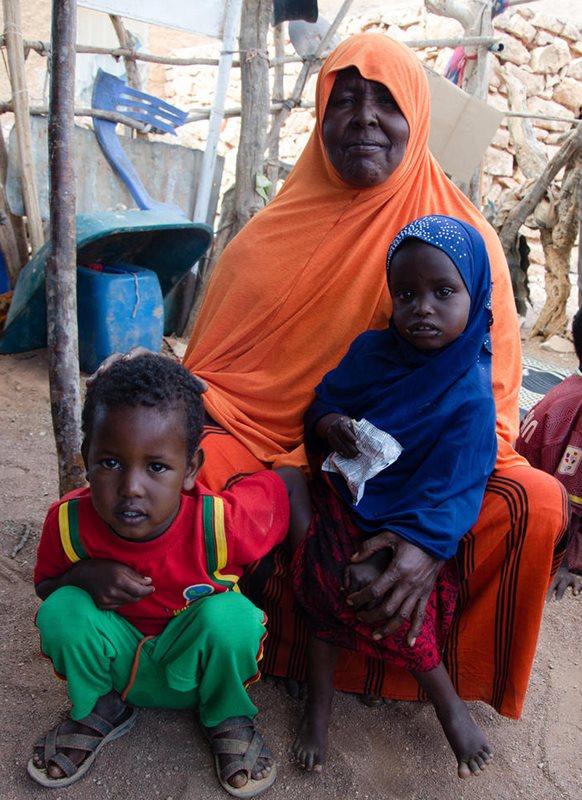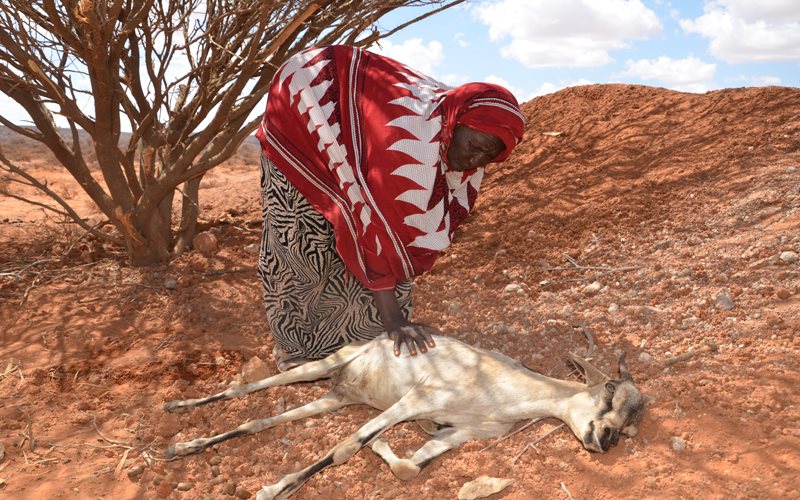Childhood under assault
Part 6: Amina, Somalia
Girls and boys deserve to grow up free from abuse and exploitation. But in the world’s most dangerous places, childhood is frequently the first casualty. Here is Amina’s story, the sixth in our 10-part series.
“She was so weak, she couldn’t walk.”
She was born into a family of pastoralists on the plains of Somalia – a baby girl filled with potential. Who knows what gifts lie behind those bright eyes?
But drought was poised to claim Amina’s childhood, even before her first cry. It crept across the countryside as she grew in her mother’s womb, drying up ponds and shriveling the grass.
Amina had this one chance to be born strong and healthy. Drought or no drought, her growing body and brain required nutrients of all kinds.
Nature directs the bodies of pregnant women to prioritize their unborn children, sending critical minerals like iron and calcium to baby.
But when mothers have little to eat, there’s less to pass on to their unborn babies. And children can pay for the rest of their lives.
Praying for rain
Amina’s mama stroked her growing belly and squinted up at the uncaring sky. When would the rains come? Not sudden deluges that run off the parched land and disappear immediately. But regular, reliable, life-giving water.
Somalia’s pastoralist families are known to be hearty and resilient. For hundreds of generations, people’s food, income and security have come from their herds.

For children like Amina, life and health are linked directly to the health of those animals. When the rains come regularly, the grass grows tall and the ponds fill deep. Goats and camels thrive.
But more and more, Somalia’s weather patterns have gone rogue –
killing off the very creatures they were designed to sustain. Animals die, then people die.
Starting with the very youngest.
Amina arrives
When Amina’s mother first held her baby girl, it’s possible she had little to offer besides love. Perhaps, not even breastmilk.
When mothers don’t get enough nutritious food to eat, their milk is low in nutrients. Sometimes, it doesn’t flow at all.
The drought didn’t end. Not when Amina first crawled across the dusty ground, the dried grass prickling her knees. Not at the age when most children love to walk and run.
The families’ goats began dying off, leaving not even supplementary milk for Amina. The tiny girl got thinner and thinner. And eventually, she didn’t have the strength to walk at all.
The brink of starvation
Amina was two years old when World Vision workers first had a chance to meet her. Her mother carried the little girl to one of our emergency mobile health units.
Amina’s eyes were dull that day. At the age when many Canadian moms chase their toddlers around doctor’s waiting rooms, Amina was limp and still on her mama’s lap.
By this time, the little girl was severely malnourished, weighing an unthinkable six kilograms. Just half of what she should have been for her age.
 Amina and her brother, with their mother, at a World Vision health clinic. Amina was one month into her treatment at the time. Photo: Brett Tarver
Amina and her brother, with their mother, at a World Vision health clinic. Amina was one month into her treatment at the time. Photo: Brett Tarver
Doctors started Amina on an emergency feeding plan: three packets of nutrient-rich supplements every day. A month later, she was doing much better. She had gained a lot of the weight her mother had so badly wanted to provide.
Still, her mother despaired for the future.
Amina’s brother had been in the same situation just a few months earlier – needing emergency care. Would this be the pattern throughout childhood?
“We’ve lost all our goats and camels,” said the children’s mom. “And now, our family can afford to eat only once a day. I am very sad and anxious for my children.”
 Without water, pastoralist families lose their livestock. And without their livestock, they lose food, milk, income and security. Photo: Brett Tarver
Growing slowly better
Without water, pastoralist families lose their livestock. And without their livestock, they lose food, milk, income and security. Photo: Brett Tarver
Growing slowly better
For Amina’s whole life, Somalia has been wracked by conflict in addition to the drought. The government is so preoccupied with civil war, the country’s economy in such tatters, that there’s little budget for basics like healthcare.
Children are the most cruelly affected. With their growing bodies and immature immune systems, they’re vulnerable to malnutrition, illness and life-long stunting of body and brain.
World Vision mobile health units have helped save the lives of many Somali children like Amina and her brother through our emergency nutrition program. They are alive, for now.
But there’s still the future to consider.
Somalia is extremely fragile. Amina is still very frail. And despite the complexity of their situations, both desperately need the world’s support.
Global poverty is in retreat but has become more concentrated in the world’s darkest places. Over the next decade, more than 80 per cent of the world’s poorest children and families will live in the most dangerous places where lives and futures are threatened by conflict and disaster. Join the movement and take action against injustice. Learn how you can help.